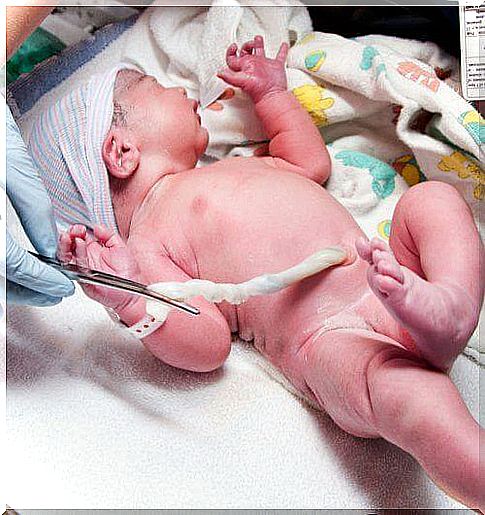Clamping The Umbilical Cord Immediately Has Its Drawbacks

One of the main routines carried out immediately after the baby is born is clamping the umbilical cord; So far there has been no discussion about it, but it is believed that it could be a bad practice. In recent years it has been discovered that it may be better to allow the cord to remain unclamped for longer, until it dies naturally.
It is believed that the clamping of the cord prevents the passage of oxygen and blood to the baby in an abrupt and precipitous way, something that may affect the baby. As we know, the oxygen connection that the baby maintains while in the womb is permanent, but it does not stop voluntarily once the baby is born.
Apparently after delivery, amounts of blood and oxygen continue to be sent to the lungs, which favors the respiratory system of the newborn. So if we violently stop this current, we could be depriving the baby of a last and necessary impulse.

On the other hand, we know that it is a common action in hospitals, it is something that has been done for years and until now it was not believed that it would affect the baby in any way. In this sense, the investigations affirm that perhaps the problem is not to stop the circulation with the clamping, but that benefits could be obtained if we leave it without clamping.
Why leave the umbilical cord unclamped?
Both the umbilical cord and the placenta are systems that remain alive during the gestation process, providing nutrients and vital substances to the fetus. When the term of pregnancy occurs, the destiny of these elements is death; but it does not occur instantly, they continue to beat for a few minutes.
“ It is a compelling finding. It’s hard not to think that delayed cord clamping, including improving iron stores and more hemoglobin, is a good thing. “
-Dr. Jeffrey Ecker. Obstetrician-
According to researchers at the University of Adelaide in Australia, many benefits have been discovered over leaving the umbilical cord unclamped until it stops pulsing naturally. Therefore, traditional immediate clamping could be a disadvantage that most have suffered.
Substances that are passed on at the last minute could be of great help in improving the baby’s respiratory system. In addition, according to studies, the precipitation of the impingement is capable of causing a pulmonary alteration, since the regular opening is prevented.

The theories in this regard indicate that other possible consequences of anticipated clamping are.
- Hypovolemia
- Hypotension
- Cerebral haemorrhage
- Anemia
- Behavioral or learning disorders
- Respiratory problems
For experts, early clamping can have more serious consequences in premature babies, because they have many more needs at birth. Many times this event is capable of producing adverse reactions, such as a drop in blood pressure.
But instead, when the cord is left to finish its function naturally, the flow of supplies that it brought at the time of birth is respected. This natural process protects the baby from brain damage or also protects the respiratory system, while providing the necessary iron to survive in the following months.
Despite the fact that there is evidence that clamping the umbilical cord immediately can be disadvantageous, obstetricians and gynecologists around the world consider that there is not total conviction of the fact. However, it is an increasingly common practice, because it could be much more beneficial than not trying.
Dr Philippa Middleton from the Australian Baby and Women’s Health Research Center says late clamping is justified, especially in cases of diagnosed anemia. It suggests that in fact the procedure can help improve iron stores and increase the level of hemoglobin concentration ; however, it has been associated with a probable risk of jaundice.









